Related Research Articles

The North Atlantic Treaty Organization, also called the North Atlantic Alliance, is an intergovernmental military alliance of 31 member states – 29 European and two North American. Established in the aftermath of World War II, the organization implemented the North Atlantic Treaty, signed in Washington, D.C., on 4 April 1949. NATO is a collective security system: its independent member states agree to defend each other against attacks by third parties. During the Cold War, NATO operated as a check on the threat posed by the Soviet Union. The alliance remained in place after the dissolution of the Soviet Union and the Warsaw Pact and has been involved in military operations in the Balkans, the Middle East, South Asia, and Africa. The organization's motto is animus in consulendo liber.

The Second Northern War (1655–60), was fought between Sweden and its adversaries the Polish–Lithuanian Commonwealth (1655–60), the Tsardom of Russia (1656–58), Brandenburg-Prussia (1657–60), the Habsburg monarchy (1657–60) and Denmark–Norway. The Dutch Republic waged an informal trade war against Sweden and seized the colony of New Sweden in 1655, but was not a recognized part of the Polish–Danish alliance.

The Scandinavian defence union was a historical idea to establish a military alliance between Sweden, Norway, Finland and Denmark after the end of World War II, but the idea did not come about when Denmark, Iceland and Norway joined NATO in 1949 at the request of the United States, while Finland and Sweden did not.
The Treaties of Stockholm are two treaties signed in 1719 and 1720 that ended the war between Sweden and an alliance of Hanover and Prussia.
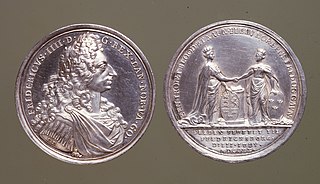
The Treaty of Frederiksborg was a treaty signed at Frederiksborg Castle, Zealand, on 3 July 1720, ending the Great Northern War between Denmark–Norway and Sweden.
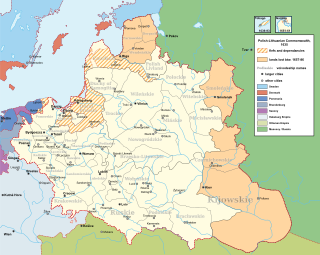
The Treaty of Polyanovka was a peace treaty signed on 14 June 1634 between the Polish–Lithuanian Commonwealth and the Tsardom of Russia in the village of Semlevo located near the Polyanovka river between Vyazma and Dorogobuzh.

The neutral powers were countries that remained neutral during World War II. Some of these countries had large colonies abroad or had great economic power. Spain had just been through its civil war, which ended on 1 April 1939 —a war that involved several countries that subsequently participated in World War II.

NATO is a military alliance of thirty-one European and North American countries that constitutes a system of collective defense. The process of joining the alliance is governed by Article 10 of the North Atlantic Treaty, which allows for the invitation of "other European States" only and by subsequent agreements. Countries wishing to join must meet certain requirements and complete a multi-step process involving political dialog and military integration. The accession process is overseen by the North Atlantic Council, NATO's governing body. NATO was formed in 1949 with twelve founding members and has added new members nine times. The first additions were Greece and Turkey in 1952. In May 1955, West Germany joined NATO, which was one of the conditions agreed to as part of the end of the country's occupation by France, the United Kingdom, and the United States, prompting the Soviet Union to form its own collective security alliance later that month. Following the end of the Franco regime, newly democratic Spain chose to join NATO in 1982.

NATO is an international military alliance consisting of 31 member states from Europe and North America. It was established at the signing of the North Atlantic Treaty on 4 April 1949. Article 5 of the treaty states that if an armed attack occurs against one of the member states, it shall be considered an attack against all members, and other members shall assist the attacked member, with armed forces if necessary. Article 6 of the treaty limits the scope of Article 5 to the islands north of the Tropic of Cancer, the North American and European mainlands, the entirety of Turkey, and French Algeria, the last of which is moot. Thus, an attack on Hawaii, Puerto Rico, French Guiana, the Falkland Islands, Ceuta or Melilla, among other places, would not trigger an Article 5 response.

The Peace of Lund, signed on 16 September (O.S.) / 26 September 1679, was the final peace treaty between Denmark–Norway and the Swedish Empire in the Scanian War.
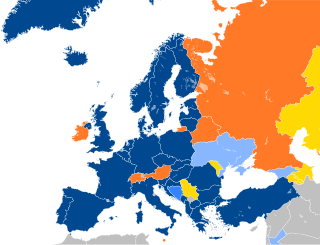
NATO maintains foreign relations with many non-member countries across the globe. NATO runs a number of programs which provide a framework for the partnerships between itself and these non-member nations, typically based on that country's location. These include the Euro-Atlantic Partnership Council and the Partnership for Peace.

Events from the year 1816 in Sweden

Events from the year 1747 in Sweden

Events from the year 1780 in Sweden

Events from the year 1700 in Sweden

Events from the year 1654 in Sweden.

Events from the year 1635 in Sweden

Events from the year 1630 in Sweden
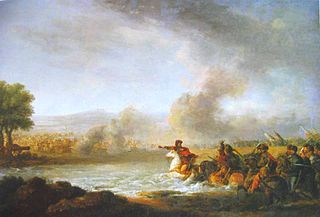
Events from the year 1656 in Sweden
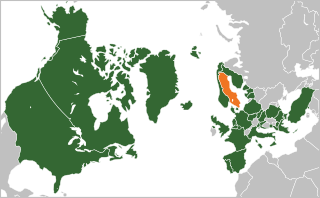
Sweden and the North Atlantic Treaty Organization (NATO) have a close relationship and regularly carry out joint exercises, cooperate in peacekeeping operations, and share information. Sweden is one of five members of the European Union that are not members of NATO. Sweden joined the Partnership for Peace on 9 May 1994.
References
- ↑ Davenport, Frances Gardiner; Paullin, Charles Oscar (2004), European Treaties Bearing on the History of the United States and Its Dependencies, The Lawbook Exchange, Ltd., p. 43, ISBN 1-58477-422-3